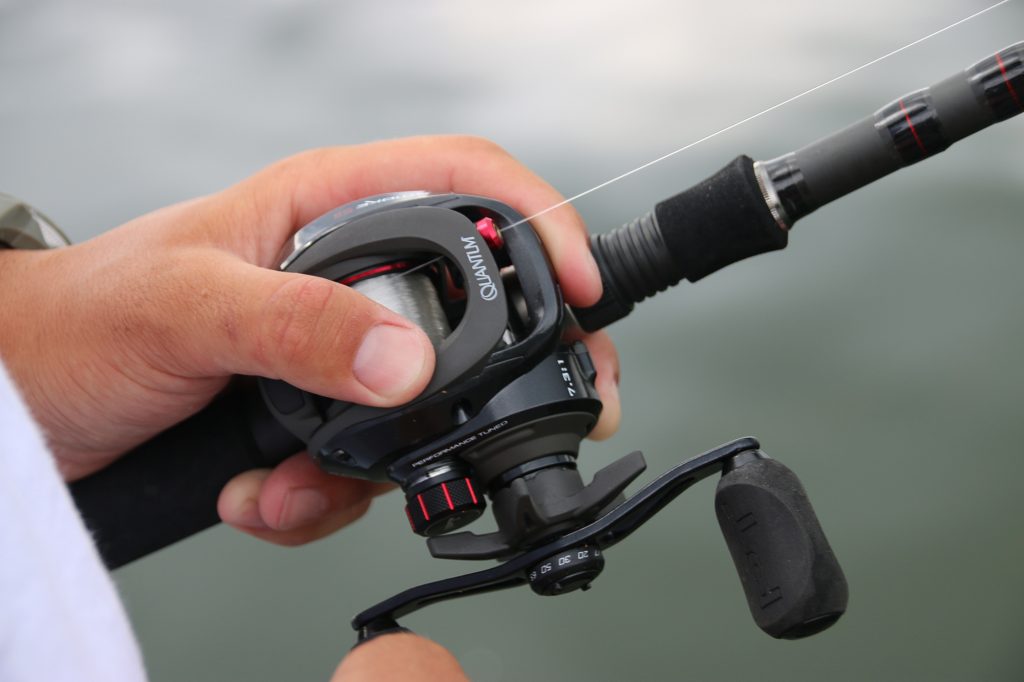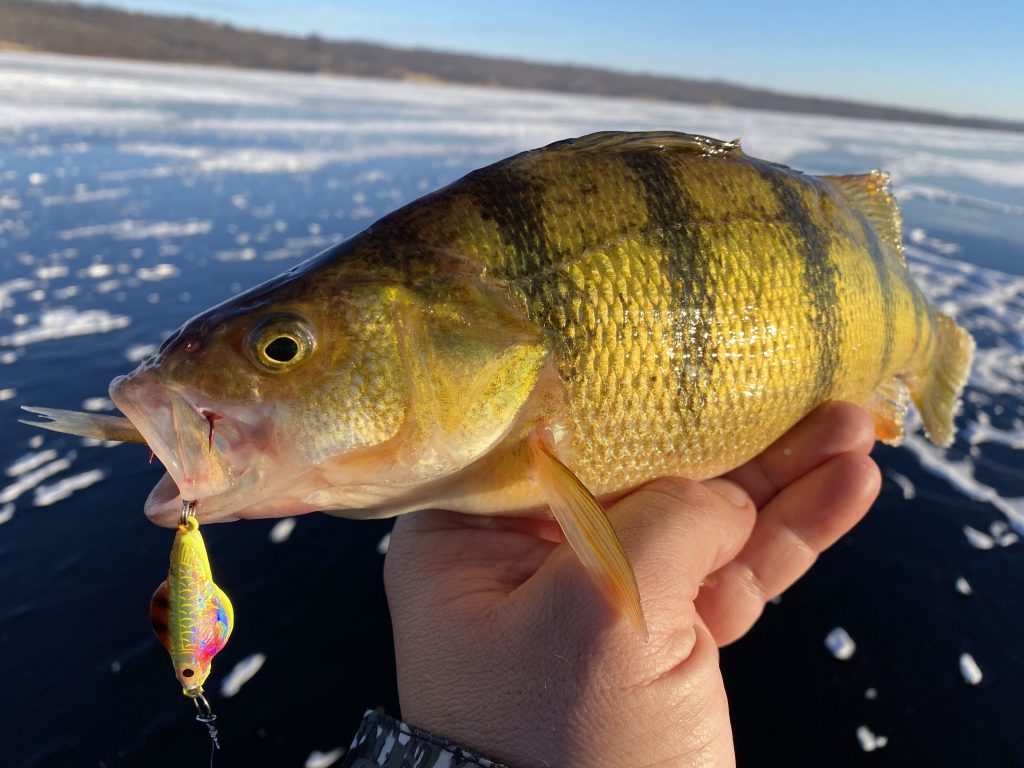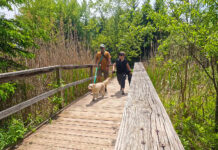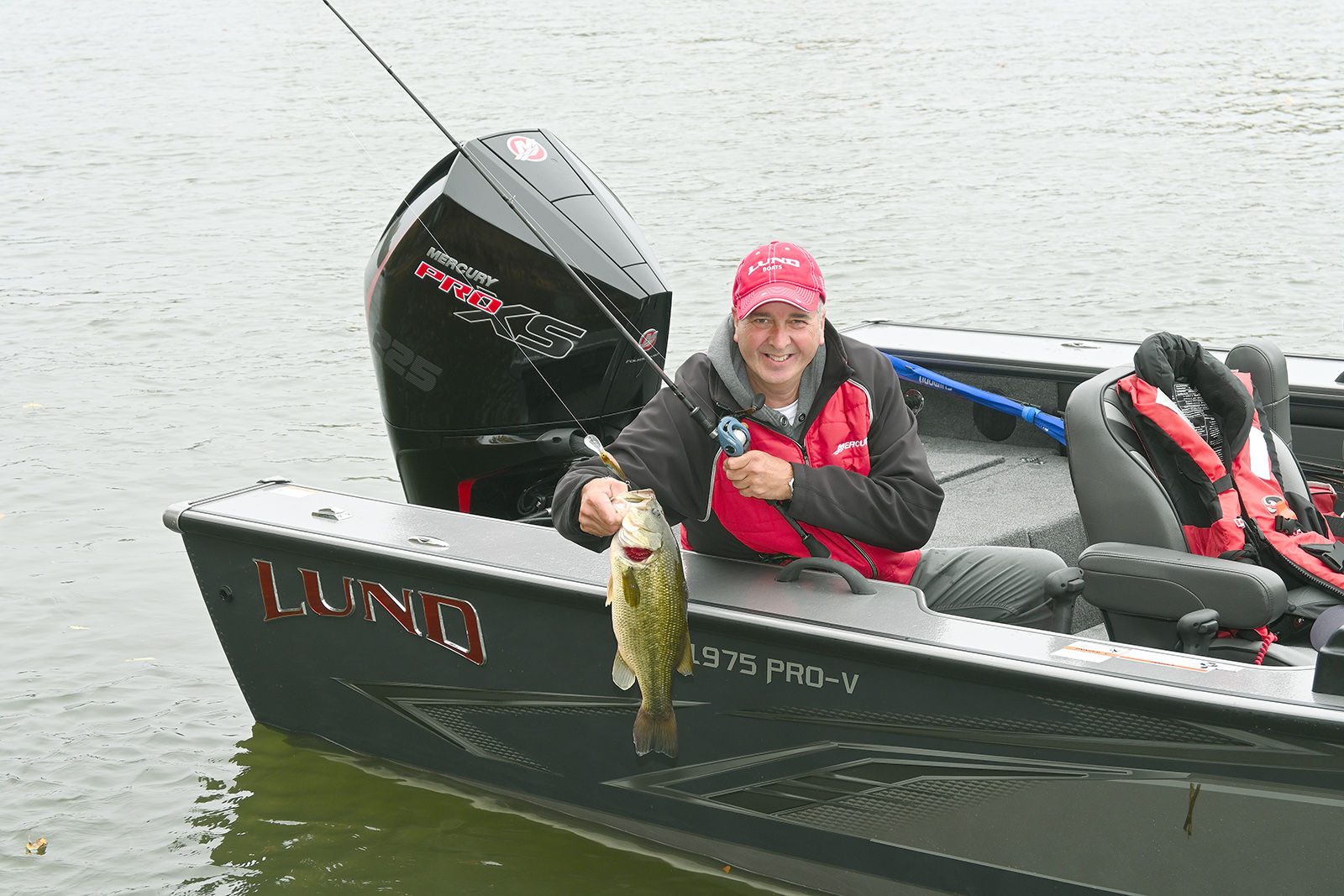Patrick Campeau has spent more than 30 years fishing professionally.
Here are the top fishing tips he has accumulated over the years.
Recently, I came to the realization that I am celebrating my 30th anniversary as a professional fisherman; I have put so much water under the hull of my boats in those 30 years!
I thought I would share with my faithful readers, the 30 best tips I have accumulated over my long and successful career.
- Much like your RV before a trip, always check your boat, gear and tackle before you leave home. You don’t want to realize that the starter battery is dead or that your reel is locked-up when you arrive at your destination. Check everything before leaving, because once you get there, it’s often too late.
Fishing line doesn’t age well. All types of line lose much of their characteristics as they age. Factors such as moisture, UV rays, friction that occurs while fishing and other factors sap the line strength over time. Be sure to change your fishing line at the start of every season.
High performance fishing lines give you much better feel when fish are nibbling. These incredible products, made with Spectra or other high tech materials, transmit the faintest action directly to the fisherman’s hands. It also helps you feel the transitions from one type of bottom to another.
Make and use invisible leaders made of fluorocarbon. Their refraction qualities make them completely invisible under water. Their stretch factor is not ideal, but they remain an excellent choice for a 40 to 150 cm leader that is completely invisible.
When a line stretches, you sacrifice feel and setting strength. The vast majority of monofilament and fluorocarbon lines have a coefficient elasticity of up to 30%. If your line is stretched, it will be harder to feel when a fish is biting. Also, your hook-setting motions are almost completely dampened.
Choose a line with the smallest possible diameter. A line with a small diameter will allow your lures to dive deeper. They will also coast through the water much more easily. Also, fish will have less of a chance of discovering the trap you’re laying out for them. High performance lines are all of a very small caliber.
Learn how to tie good knots. There are many fishermen who believe that they tie good knots, while in reality they could use some work. When you’re done tying your knot, slowly pull the line. If the end that you cut rotates slowly, it means the knot is slipping and isn’t solid. So keep practicing. Learn how to properly tie the Palomar knot, the double fisherman knot etc.
 Your grip on the rod and reel will affect your ability to sense a strike. Each combination of rod and reel is different, so find a grip that gives you comfort and control while providing the best sensory feedback to your tackle.
Your grip on the rod and reel will affect your ability to sense a strike. Each combination of rod and reel is different, so find a grip that gives you comfort and control while providing the best sensory feedback to your tackle.Use proper and well-balanced equipment. You cannot match just any rod with any reel. The stiffness of the rod and the type and capacity of the reel need to be properly matched. Read the specifications carefully.
Use lures and fishing techniques that make you feel confident. If you don’t feel good about the way you are fishing, then you’re not all in and your results will suffer. The degree of confidence you have in your lure and the way you are fishing it can help make you super productive, or render you totally unsuccessful.
Take the time to check that your hooks are sharp before heading out, even if they’re brand new. Take the tip of the hook and press it against a fingernail while applying a slight pressure. If the hook slips and scratches your nail, it’s in need of sharpening. If it doesn’t slip and tries to bite into the nail, the hook is sharp enough.
Fish the banks towards which the wind is blowing the hardest. When gusts blow in a certain area, they naturally carry all the microorganisms that comprise the base of the food chain in that area. Smaller fish will be attracted to these micro-organisms, the larger predators will be attracted to the smaller fish and so on.
Eliminate or camouflage negative odours. I don’t believe a fish will swim long distances to bite a lure that you have applied a scent to, but on the other hand, I’m convinced that when they are more selective, fish will not bite a lure with offensive or unpleasant odours.
Use as little tackle as possible. Fishermen who use metallic leaders for species others than pike, as well as large swivels or any other unnecessary attachments, do not realize they are doing more harm than good. Fish notice hardware and will swim away. Try to keep the essence of surprise!
Change up your techniques, presentation, lures etc. We all have our own style of fishing, favourite lures, and favourite bait. But that doesn’t mean fish will always respond. Try to mix it up – experiment a little and try your luck with different methods. You may be surprised by the results!
Do not fish blind. Learn how to adjust your sonar. When looking at the surface of the water, it is difficult to know what lies below. Fish finding sonar will show you if there are fish present and what the underlying structure is like. For increased performance, use the manual mode, increase the sensitivity and zoom in.
Use your time more wisely by using a map. Different species of fish live in different habitats and have different behaviour. It can be very useful to use a detailed map to locate where the species you’re looking for are likely to be hiding. Head to these preferred sectors first to maximize your chances.
Target a specific species. If you try to catch anything and everything that may bite in a body of water, you won’t end up having much success. Make sure you do some research on the fish you’re targeting and use the tried and true methods of catching them. See my article “What Fish Eat” to learn more about the selection of terminal tackle – https://www.rvlifemag.com/what-fish-eat/
Wear polarized sunglasses – this will take the glare off the water, allowing you to see fish and rocks more clearly. They also provide critical protection against harmful UV rays. As an added bonus, they will give your eyes a bit of protection from stray lures that may be flying through the air.
When you have a fish on your hook, raise your rod, and reel in while lowering it. The worst thing you can do to tangle your fishing line is to reel in as the fish is trying to escape and pulling your line out. By pumping your rod from down to up, you can easily retrieve your line as you lower the rod.
 Paying attention to small details makes a big difference. Fishermen who are not thorough and don’t pay attention to the small details are often the ones who go home empty handed. As stated before, don’t add unnecessary hardware, choose a line with a small gauge and use a balanced rod set-up.
Paying attention to small details makes a big difference. Fishermen who are not thorough and don’t pay attention to the small details are often the ones who go home empty handed. As stated before, don’t add unnecessary hardware, choose a line with a small gauge and use a balanced rod set-up.Concentrate on the task at hand and be ready for action. It is true that fishing is a relaxing activity. If you want to take it easy, this is a perfect opportunity. However, if you want to catch fish, you have to be proactive. Be more alert and remember that nibbles can occur at any time.
Cover more territory, follow the seasonal migrations. Fish migrate throughout the year. Water temperature, habitat transformation, predation and proximity to food are just a few factors that drive them to change their territory. Take the time to explore in order to locate them.
At the end of the fight, do not chase after the fish with the net. The worst thing a partner can do with the net is to go after that trophy fish aggressively, especially if he tries to catch it from the rear. Wait for the fish to calm down before sliding it into the landing net.
Establish a strategy with your partners on how to use the net. If you do not, there is a risk of confusion and even discontent if a big fish manages to escape. The ideal technique is to immerse the landing net in the water and wait for the fish to be in front of and close to the net. All that remains is to gently raise the net to catch the fish.
A lure designed for a specific species may work for others. Be aware that several trout spoons work great for lake trout and pike. Also note that many crankbaits and jerkbaits will not only get a reaction from walleye, but also lake and speckled trout, bass and several other species.
Always stay positive. Optimism helps and works at all times. If you fish nonchalantly and with little conviction, it is a safe bet that the results will hardly be enviable. Remember that catching fish is often a question of attitude, opportunity and timing. The action could occur at any time.
Never get discouraged. Fishing is not a guaranteed harvest. Remember that even the best fishermen sometimes return empty-handed. Fish provide us with daily puzzles that we simply have to decode. The more experience you gain, the easier it will be to outsmart the fish.
- Try to keep fit in order to avoid injury. It would be annoying to be unable to go fishing because of an injury to the neck, shoulder blades, shoulders, elbows and wrist. For example, fly fishermen often suffer from a common shoulder problem, at the level of the rotator cuff.
- Wear your lifejacket. It is incredible to note that over 75% of drowning victims were not wearing a PFD. Most fishermen seem to believe that this type of drama cannot happen to them. However, 88% of the victims were men with an average age of 47, and more than 52% of the accidents occurred on small lakes.
- Always protect Mother Nature. We are extremely fortunate to be able to enjoy a spectacular natural territory full of fish and game. Do everything in your power to protect it if you want tomorrow’s generations to benefit from all the beauties found in the hinterland. Please, do your part.






















